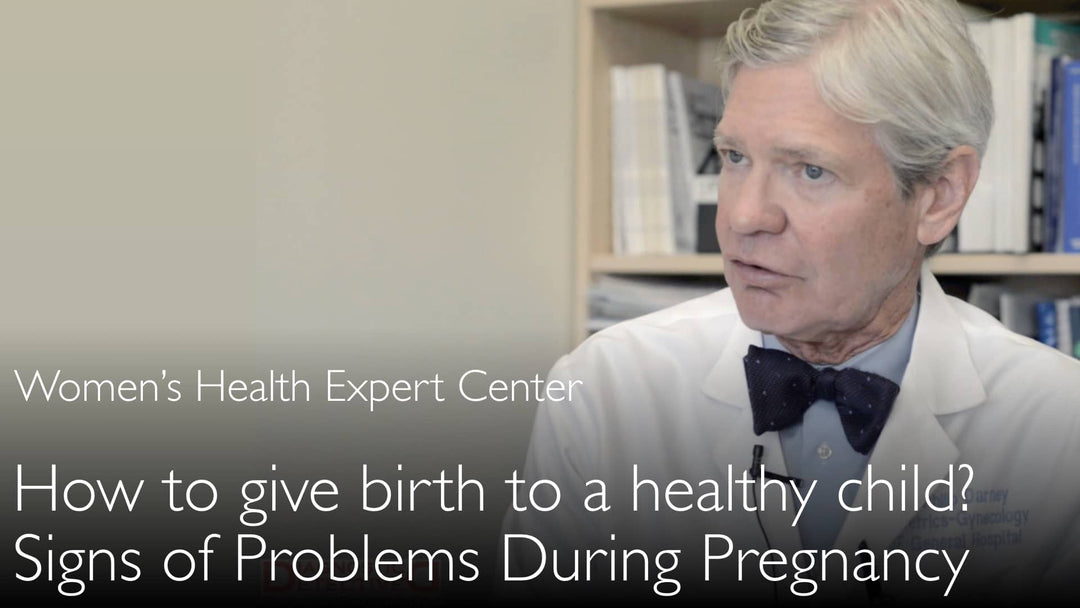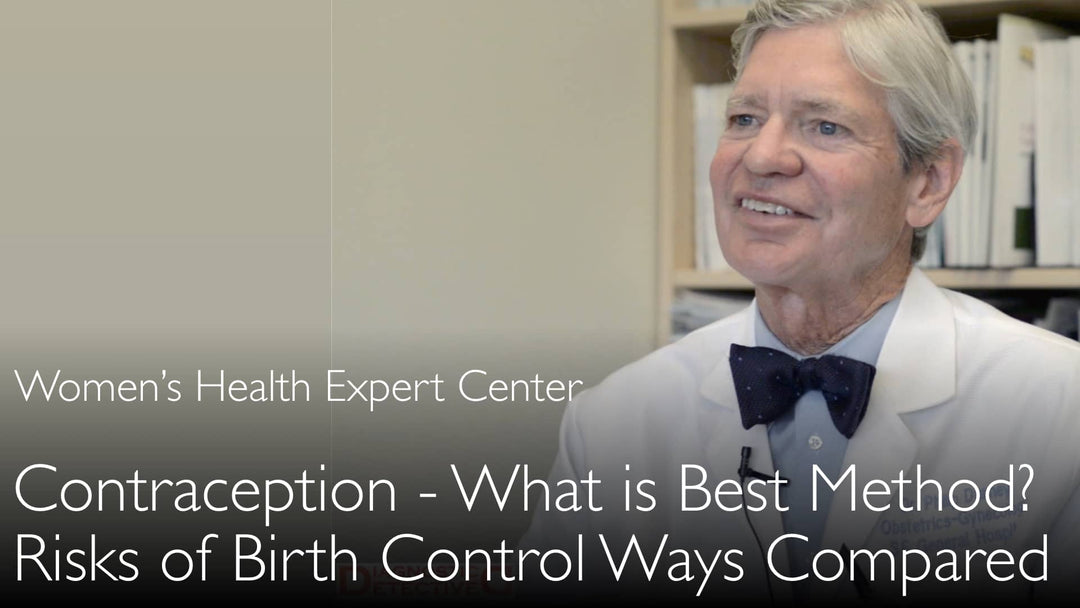모체-태아 감염 분야의 선도적 전문가인 Yves Ville 박사(의학박사)가 임신 중 톡소포자충증과 파르보바이러스 B19 감염 위험을 줄이는 방법을 설명합니다. 그는 어떤 감염에 대해 선별 검사가 필요한지, 또 어떤 감염에 대해 인식이 중요한지 상세히 다룹니다. Yves Ville 박사(의학박사)는 톡소포자충증의 세계적 유병률과 불충분하게 조리된 고기 및 고양이 배설물을 통한 전파 경로를 논의합니다. 또한 초음파, 자기공명영상(MRI), 제대혈 채취를 포함한 감염된 태아의 정교한 모니터링 기법을 소개합니다. 치료 프로토콜과 조기 발견의 중요성도 함께 다루고 있습니다.
임신 중 톡소포자충증과 파르보바이러스 B19 위험 관리
항목 바로가기
- 임신 중 모체 감염 선별검사
- 파르보바이러스 B19 인식과 태아 빈혈 위험
- 톡소포자충증 전파와 세계적 유병률
- 임신 중 톡소포자충증 영향과 치료
- 감염에 대한 고급 태아 모니터링 기술
- 전체 대본
임신 중 모체 감염 선별검사
Yves Ville 박사(의학박사)는 특정 모체 감염에 대해 확립된 선별검사 프로토콜의 중요성을 강조합니다. 매독과 간염 같은 감염은 임신 중 보편적으로 선별검사를 시행하며, 이들의 치료법은 잘 알려져 있고 매우 효과적입니다. 다만 Ville 박사는 다른 중요한 감염들은 일상적으로 선별검사되지 않는다고 지적합니다. 이러한 산전 관리의 공백을 메우기 위해서는 태아 건강을 보호하기 위해 높은 수준의 임상적 경각심이 필요합니다.
파르보바이러스 B19 인식과 태아 빈혈 위험
파르보바이러스 B19는 보편적 선별검사보다 의료진과 임산부의 인식이 더욱 중요한 감염입니다. Yves Ville 박사(의학박사)는 이 바이러스가 심각한 태아 빈혈을 유발할 수 있다고 설명합니다. 특히 어린이집에 다니는 자녀가 있는 임산부가 위험에 노출되기 쉽습니다. Ville 박사는 어린이집에서 파르보바이러스 B19 사례가 발생하면 부모에게 이를 알려야 한다고 권고합니다. 이를 통해 임산부가 태아의 빈혈 여부를 확인하기 위해 신속하게 의학적 평가를 받을 수 있습니다.
톡소포자충증 전파와 세계적 유병률
톡소포자충증은 1940년대에 발견된 기생충 감염병입니다. Yves Ville 박사(의학박사)에 따르면, 이 감염은 지역에 따라 유병률이 크게 다른 글로벌 보건 이슈입니다. 고위험 지역에는 브라질과 그리스, 스페인, 프랑스, 이탈리아 같은 지중해 연안 국가들이 포함됩니다. 전파 경로는 주로 기생충 낭포에 오염된 덜 익힌 고기나 고양이 배설물로 오염된 음식을 통한 식품 매개입니다. 현대의 변화된 식습관으로 인해 기존에 면역력을 가진 여성의 비율이 줄어들어, 임신 중 감염 취약성이 높아지고 있습니다.
임신 중 톡소포자충증 영향과 치료
톡소포자충증 감염의 영향은 임신 시기에 따라 다릅니다. Yves Ville 박사(의학박사)는 감염이 일찍 발생할수록 기생충이 태반을 통과하기 어렵지만, 일단 통과하면 태아에게 심각한 손상을 줄 가능성이 더 크다고 설명합니다. 임신 중 톡소포자충증 치료는 항생제를 사용하며, Ville 박사는 대부분의 경우에서 효과적이라고 말합니다. 태아 감염 여부는 양수천자를 통해 양수에서 기생충을 분리하여 확인합니다.
감염에 대한 고급 태아 모니터링 기술
현대 의학은 감염된 태아를 정밀하게 모니터링할 수 있는 도구를 제공합니다. Yves Ville 박사(의학박사)는 톡소포자충증 같은 감염 진단 후 적용하는 포괄적 접근법을 소개합니다. 여기에는 연속 초음파 검사와 태아 자기공명영상(MRI)이 포함됩니다. 경우에 따라 의사들은 제대천자를 통해 태아 혈액을 채취하기도 합니다. 이를 통해 혈구 수를 분석하고 기생충 양을 직접 측정함으로써 정확한 예후를 판단하고 맞춤형 치료 효과를 모니터링할 수 있습니다.
전체 대본
Anton Titov 박사(의학박사): 이제 감염 관련话题로 넘어가겠습니다. 귀하는 모체와 태아 감염 분야의 전문가로 알려져 있습니다. 태아 감염을 선별검사하는 최선의 방법은 무엇인가요? 현재 임신 중 모체 감염 가운데 일상적으로 선별검사되지 않지만, 더 널리 시행되어야 할 것은 무엇인가요?
Yves Ville 박사(의학박사): 널리 선별검사되는 몇 가지 감염이 있습니다. 가장 오래되고 확립된 감염들인 매독과 간염 같은 것들이죠. 이들은 어디서나 선별검사되며, 좋은 관행입니다. 치료법도 매우 잘 알려져 있고 효과적입니다.
그 외에도 선별검사는 아니지만 존재를 인지해야 할 감염들이 몇 가지 있습니다. 태아가 영향을 받을 경우 이를 알아차려야 하죠. 예를 들어 파르보바이러스 B19는 태아에게 심각한 빈혈을 유발할 수 있습니다. 어린이집에 다니는 어린 자녀가 있는 여성들은 이를 인지해야 합니다. 실제로 어린이집에서는 보육 시설 내 사례 발생 시 이를 알려야 합니다. 그래서 어린 자녀가 있고 임신한 여성들이 파르보바이러스 B19 위험을 인식할 수 있도록 말이죠. 그들은 의사를 만나 태아가 빈혈이 아닌지 확인받아야 합니다.
하지만 매우 널리 선별검사되지 않는 두 가지 감염이 있습니다.
그중 하나는 1940년대에 발견된 톡소포자충증으로, 실제로 기생충에 의한 감염입니다. 톡소포자충증은 전 세계적으로 발생하지만,某些 지역이 다른 지역보다 더 취약합니다. 브라질에서는 큰 문제입니다. 톡소포자충증 기생충 균주가 태아에게 매우 공격적이기 때문입니다. 미국에서도 문제가 됐습니다. 역사적으로 임신 중 톡소포자충증 연구의 선구자 중 한 명이 미국 출신이었지만, 현재는 그렇게 유행하지 않는 것 같습니다. 왜냐하면 식품을 매개로 전파되기 때문입니다.
주로 고양이를 통해 기생충의 난포에 오염된 음식으로 전파됩니다. 톡소포자충증 낭포는 예를 들어 덜 익힌 양고기 같은 고기에 있을 수 있습니다. 임산부가 오염된 음식을 섭취하면 낭포가 파괴되고, 톡소포자충증 기생충의 침습 형태가 태반을 통과할 수 있습니다.
따라서 톡소포자충증은 임신 전체 기간 동안 위험합니다. 다행인 점은 여성이 몇 년 전, 어렸을 때나 임신 전에 이미 감염됐다면 재감염되지 않는다는 것입니다. 좋은 점이죠. 하지만 우리의 식습관이 변하면서 톡소포자충증에 면역인 여성이 점점 줄어들고 있습니다. 정크푸드나高度로 멸균된 음식, 냉동 식품을 먹는데, 톡소포자충은 거기에 없거든요.
하지만 고위험 지역으로 여행한다면, 제가 언급한 브라질이나 지중해 연안—그리스, 스페인, 프랑스, 이탈리아 같은 곳이라면 이야기가 다릅니다. 톡소포자충증이 더 널리 퍼져 있고, 고양이와 소가 일반적인 감염 원천입니다. 점점 더 적은 여성들이 면역을 갖고 있기 때문에, 이는 높은 위험 요소입니다. 톡소포자충증은 임신에 위협이 됩니다.
하지만 모든 감염에 대해, 임신 중 더 일찍 감염될수록 태반 통과가 더 어렵습니다. 하지만 일단 통과하면, 후기 감염보다 손상이 더 클 수 있습니다. 톡소포자충증 치료는 논쟁의 여지가 있지만, 우리가 사용하는 항생제들이 많은 경우에서 효과적일 가능성이 있습니다—100%는 아니지만, 많은 경우에서 말이죠.
양수천자를 통해 양수에서 톡소포자충증 기생충을 분리함으로써 태아 감염을 확인하면, 치료를 시작할 수 있습니다. 연속 초음파와 태아 자기공명영상(MRI)을 통해 감염과 치료 효과를 추적할 수 있습니다. 현재 태아를 평가하는 방법은 매우 정교합니다.
따라서 중요한 것은 어떤 태아가 어떤 처치가 필요한지 아는 것입니다. 톡소포자충증 감염을 확인하면, 이러한 기술들을 결합해 예후를 매우 정확하게 판단할 수 있습니다. 때로는 제대천자를 통해 태아 혈액을 채취해 혈구 수와 혈액 내 기생충 또는 바이러스 양을 확인하기도 합니다. 신생아나 어린이, 성인을 모니터링하듯이 이를 지켜볼 수 있습니다.








